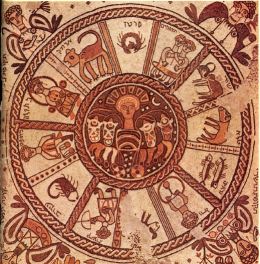How the Secular Date of Dec. 5 Made Its Way into the Jewish Calendar
 December 5 may be the most arcane date of importance in the Jewish calendar. It’s when we start saying the winter prayer for rain.
December 5 may be the most arcane date of importance in the Jewish calendar. It’s when we start saying the winter prayer for rain.
Right off the bat, a question presents itself: Why do we use a secular date to delineate this Jewish custom, when all of the others are based on the Jewish calendar? And secondly, what’s the magic behind December 5? The answers take us on a fascinating journey through Jewish text, nature, astronomy, history, infrastructure, and politics.
There are in fact two times we add a mention of rain to our service. The first, more familiar now, is the short insertion in the Amida prayer about God’s power: mashiv ha-ru’ach umorid ha-gashem. God makes the wind blow and the rain fall. The second is an addition to the prayer petitioning God for bountiful produce: ten tal umatar livracha. Grant us the blessing of dew and rain.
The 1800-year-old Mishnah — the initial compilation of Jewish law and practice — discusses both of these in the chapter called Ta’anit (“fasting”), starting with the first one.
There was general agreement that the insertion should commence during the rainy season, roughly Sukkot. The Mishnah records a disagreement about the details. Rabbi Eliezer considered the first day of Sukkot a good time to start praying for rain, but Rabbi Yehoshua countered that no one wants rain on Sukkot, so it would be better to wait until the end of the holiday.
But Sukkot is a pilgrimage holiday, when it was common to ascend to Jerusalem by foot. If we start praying for rain right after Sukkot, it might rain on those who are walking home.
So regarding the second insertion, Rabbi Gamaliel says that we should wait until 15 days after Sukkot to start praying for rain, that half-month being a reasonable amount of time to walk back to the farthest extent of the Land of Israel.
The Talmud — the great codification of Jewish law and practice that contains the Mishnah and meandering commentary on it — expands on the Mishnah and explains that in Babylonia they didn’t start saying the prayer for rain until 60 days into the rainy season of fall.
Jewish geography is exceedingly simple. There are essentially only three places: Jerusalem, the rest of Israel, and the rest of the world. Therefore, we in New York live in the same place (“the rest of the world”) as the Babylonians, so we follow their custom. We start saying the prayer for rain 60 days after the equinox.
The equinox is either September 22 or September 23.
But the careful reader may notice that 60 days after September 22 or 23 is November 21 or 22, not December 5. So we keep digging.
Shmuel, in the Talmud section known as Eruvin, calculates the four seasons as each lasting 91 days and 7.5 hours, and assigns September 23 as the start of fall. Because his became the official Jewish secular calendar, the Jewish equinox is always September 23. But we still wonder why we don’t start praying for rain on November 22.
Shmuel’s year of four seasons lasted 364 days and 30 hours, or 365.25 days. The solar year, though, is actually 11 minutes and 14 seconds shorter. Because of this discrepancy, the Jewish equinox has slowly moved forward compared to the solar equinox, at the rate of approximately one day every 128 years.
The Catholic Church (by coincidence) also used Shmuel’s calendar, but unlike in Judaism, most of the Christian holidays are based on the solar date. By 1582, the official and solar calendars were 10 days out of sync, one result of which was that the springtime holiday of Easter was marching forward into summer.
So Pope Gregory fixed the calendar by doing two things. He dropped 10 days in October (the day after October 4 was October 15 that year), and, moving forward, he dropped 3 leap years every 400 years: years that are divisible by 100 would no longer be leap years unless they were also divisible by 400. (That’s why 2000 was a leap year even though 1900 wasn’t, and 2100 won’t be.)
In America and elsewhere in the world we use the Gregorian calendar.
The Jews, though, didn’t give a damn about Pope Gregory. So in 1582, the Jewish equinox moved ahead 10 days to October 3, the Gregorian equivalent of the Shmuelian September 23. Since then, 1700, 1800, and 1900 have been Shmuelian leap years but not Gregorian leap years. So now the Shmuelian equinox is the Gregorian October 6.
Sixty days after October 6 is December 5. And there you have it.
But don’t get too used to that date. In the year 2100 (a Shmuelian leap year) the day moves ahead to December 6.
[Reprinted from the Vassar Temple December 2012 bulletin.]
-
December 5, 2012 at 5:00 amFor Rain « To Bend Light



